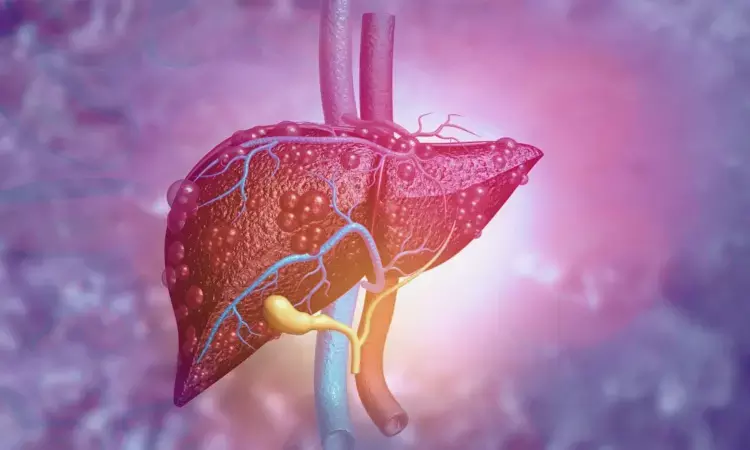- Home
- Medical news & Guidelines
- Anesthesiology
- Cardiology and CTVS
- Critical Care
- Dentistry
- Dermatology
- Diabetes and Endocrinology
- ENT
- Gastroenterology
- Medicine
- Nephrology
- Neurology
- Obstretics-Gynaecology
- Oncology
- Ophthalmology
- Orthopaedics
- Pediatrics-Neonatology
- Psychiatry
- Pulmonology
- Radiology
- Surgery
- Urology
- Laboratory Medicine
- Diet
- Nursing
- Paramedical
- Physiotherapy
- Health news
- Fact Check
- Bone Health Fact Check
- Brain Health Fact Check
- Cancer Related Fact Check
- Child Care Fact Check
- Dental and oral health fact check
- Diabetes and metabolic health fact check
- Diet and Nutrition Fact Check
- Eye and ENT Care Fact Check
- Fitness fact check
- Gut health fact check
- Heart health fact check
- Kidney health fact check
- Medical education fact check
- Men's health fact check
- Respiratory fact check
- Skin and hair care fact check
- Vaccine and Immunization fact check
- Women's health fact check
- AYUSH
- State News
- Andaman and Nicobar Islands
- Andhra Pradesh
- Arunachal Pradesh
- Assam
- Bihar
- Chandigarh
- Chattisgarh
- Dadra and Nagar Haveli
- Daman and Diu
- Delhi
- Goa
- Gujarat
- Haryana
- Himachal Pradesh
- Jammu & Kashmir
- Jharkhand
- Karnataka
- Kerala
- Ladakh
- Lakshadweep
- Madhya Pradesh
- Maharashtra
- Manipur
- Meghalaya
- Mizoram
- Nagaland
- Odisha
- Puducherry
- Punjab
- Rajasthan
- Sikkim
- Tamil Nadu
- Telangana
- Tripura
- Uttar Pradesh
- Uttrakhand
- West Bengal
- Medical Education
- Industry
Rising FIB-4 Scores Signal Higher Risk of Liver Stiffness and Mortality in MASLD Patients: Study Shows

China: A new study published in Clinical Gastroenterology and Hepatology suggests that tracking dynamic changes in the Fibrosis-4 Index (FIB-4) can provide valuable insights into liver stiffness progression, fibrosis advancement, and future clinical outcomes in patients with metabolic dysfunction-associated steatotic liver disease (MASLD). The research, led by Ming-Hua Zheng and colleagues from the Institute of Hepatology, Wenzhou Medical University, emphasizes the prognostic value of monitoring FIB-4 over time rather than relying solely on baseline measurements.
The study assessed three large cohorts to evaluate the relationship between longitudinal FIB-4 changes and disease outcomes. The VCTE-Prognosis cohort (n=10,203) was analyzed for liver stiffness progression, the Paired Liver Biopsy cohort (n=1,145) for histological fibrosis progression, and the Wenzhou Real-World (WRW) cohort (n=41,105) for clinical outcomes of mortality, cardiovascular events, and liver-related complications.
Patients were divided into low (<1.3) and high (≥1.3) FIB-4 groups. An increase in FIB-4 was defined as a ≥20% rise, with additional thresholds for patients moving from low to high categories.
The study led to the following findings:
- In the VCTE-Prognosis cohort, patients with low baseline FIB-4 who showed rising scores had over twice the risk of liver stiffness progression compared to those with stable levels (adjusted OR=2.36).
- In the high FIB-4 group, rising scores were linked to more than a threefold increase in liver stiffness progression risk (adjusted OR=3.42).
- Data from the Paired Liver Biopsy cohort indicated that increasing FIB-4 scores significantly raised the likelihood of a one-stage fibrosis progression (adjusted OR=2.20 in low FIB-4; adjusted OR=3.68 in high FIB-4).
- In the WRW real-world cohort, dynamic increases in FIB-4 were strongly associated with higher risks of all-cause mortality, cardiovascular events, and liver-related complications.
"These findings indicate that longitudinal changes in FIB-4 serve as a predictive marker not only for structural liver deterioration but also for overall prognosis in MASLD patients," the researchers wrote.
According to the researchers, this approach addresses a critical gap in current clinical practice, where single-time FIB-4 values are often used for risk stratification. By incorporating serial monitoring, clinicians can identify patients at higher risk earlier and intervene proactively to prevent disease progression and adverse outcomes.
However, the authors note that despite the robust sample size across cohorts, further validation in diverse populations is warranted. They suggest integrating dynamic FIB-4 tracking into routine MASLD management protocols alongside other non-invasive assessments to improve patient monitoring and treatment strategies.
"The study highlights the clinical significance of monitoring FIB-4 trends over time. A ≥20% rise in FIB-4 levels was consistently linked with increased risks of worsening liver stiffness, fibrosis progression, and adverse events, highlighting its potential as a practical tool for early risk detection and personalized care in MASLD management," the authors concluded.
Reference:
Zhou, X., Li, Y., Kim, S. U., Cheuk-Fung Yip, T., Petta, S., Nakajima, A., Tsochatzis, E., Shi, J., Chan, W., Boursier, J., Bugianesi, E., Yilmaz, Y., Hagström, H., Romero-Gomez, M., Alswat, K., Calleja, J. L., Takahashi, H., De Lédinghen, V., Castéra, L.,... Zheng, M. (2025). Longitudinal Changes in Fibrosis Markers: Monitoring Stiffness/Fibrosis Progression and Prognostic Outcomes in MASLD. Clinical Gastroenterology and Hepatology. https://doi.org/10.1016/j.cgh.2025.07.011
Dr Kamal Kant Kohli-MBBS, DTCD- a chest specialist with more than 30 years of practice and a flair for writing clinical articles, Dr Kamal Kant Kohli joined Medical Dialogues as a Chief Editor of Medical News. Besides writing articles, as an editor, he proofreads and verifies all the medical content published on Medical Dialogues including those coming from journals, studies,medical conferences,guidelines etc. Email: drkohli@medicaldialogues.in. Contact no. 011-43720751


